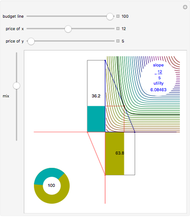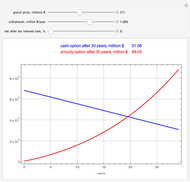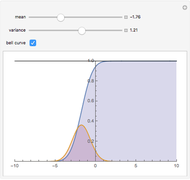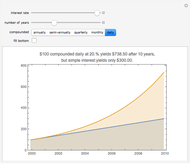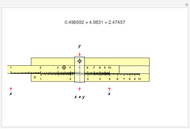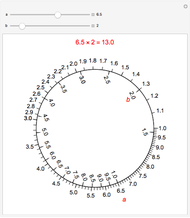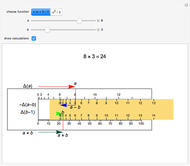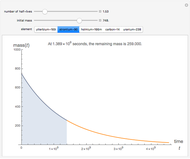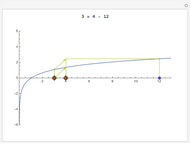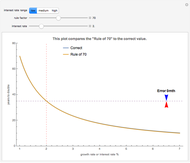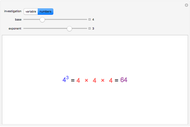Doubling Time Using the Rule of 72

Requires a Wolfram Notebook System
Interact on desktop, mobile and cloud with the free Wolfram Player or other Wolfram Language products.
The "Rule of 72" is a rule of thumb to estimate how long it takes for a number (usually an amount of money) to double in value at a given rate of increase, often expressed as an interest rate or growth rate. Change the rule factor to see the change in error between the rule and the correct number for a given interest rate. Change the interest rate to see the error for a rule factor at different interest rates. Change the interest rate range to see how effective a rule number is for that interest rate range. The idea is to select a rule factor that keeps the calculation easy and minimizes the error for the growth rate range of interest. Is 72 always the best number for the "Rule of 72"?
Contributed by: Julian Nevell (March 2014)
Open content licensed under CC BY-NC-SA
Snapshots
Details
Let  be the rate of increase and
be the rate of increase and  be the number of time periods (years). The correct value for the doubling time is
be the number of time periods (years). The correct value for the doubling time is  , so
, so  . Because
. Because  for small
for small  ,
,  .
.
Choosing different numerators changes the percent growth rate where the error is at a minimum. Some numerators are easier to calulate with, even though the result might be slightly less accurate.
Snapshot 1: rule numbers lower than 72 reduce the error for lower growth rates
Snapshot 2: rule of 72 gives a good estimate of the years to double for growth rates around 8%
Snapshot 3: rule numbers higher than 72 reduce the error for higher growth rates
Permanent Citation
"Doubling Time Using the Rule of 72"
http://demonstrations.wolfram.com/DoublingTimeUsingTheRuleOf72/
Wolfram Demonstrations Project
Published: March 11 2014






